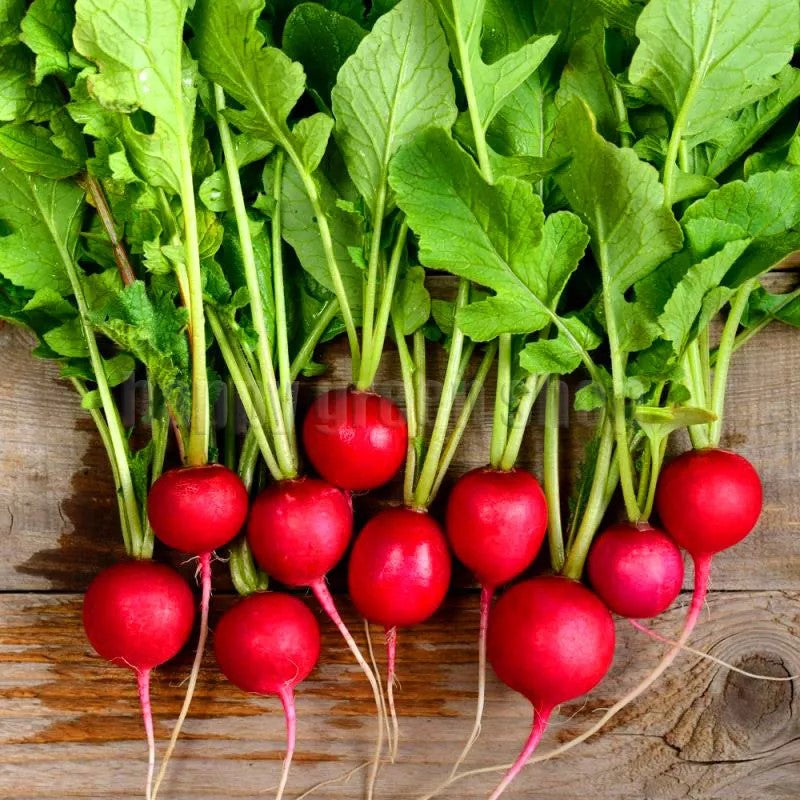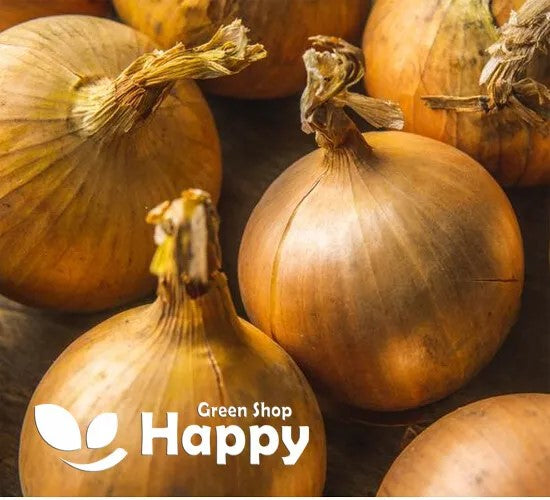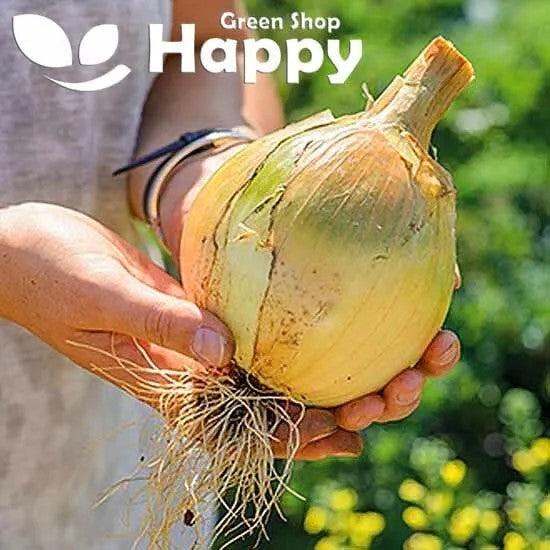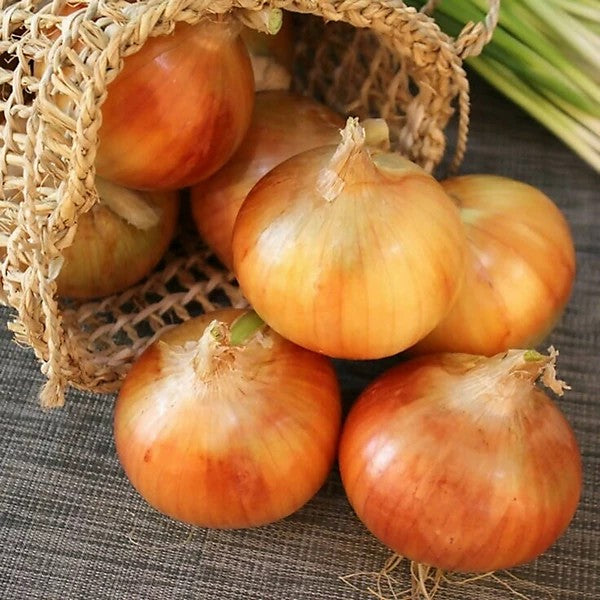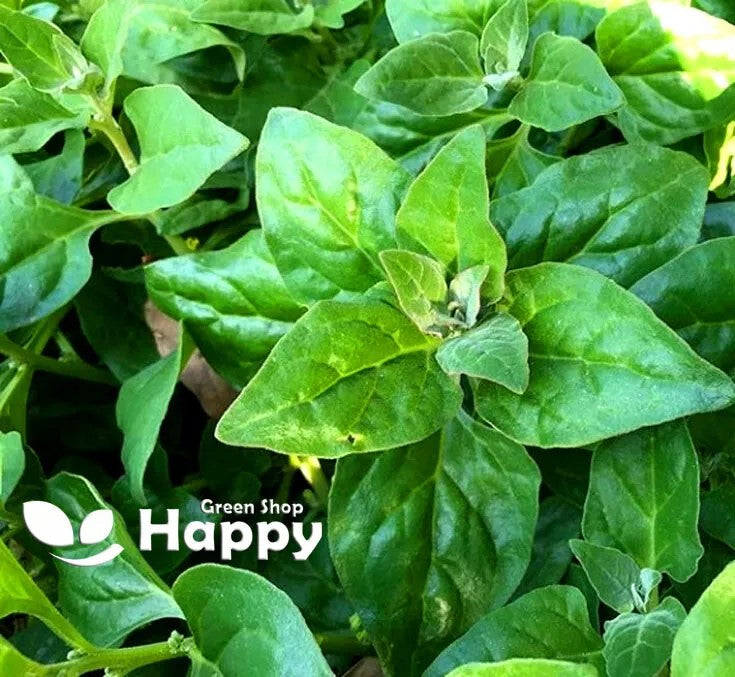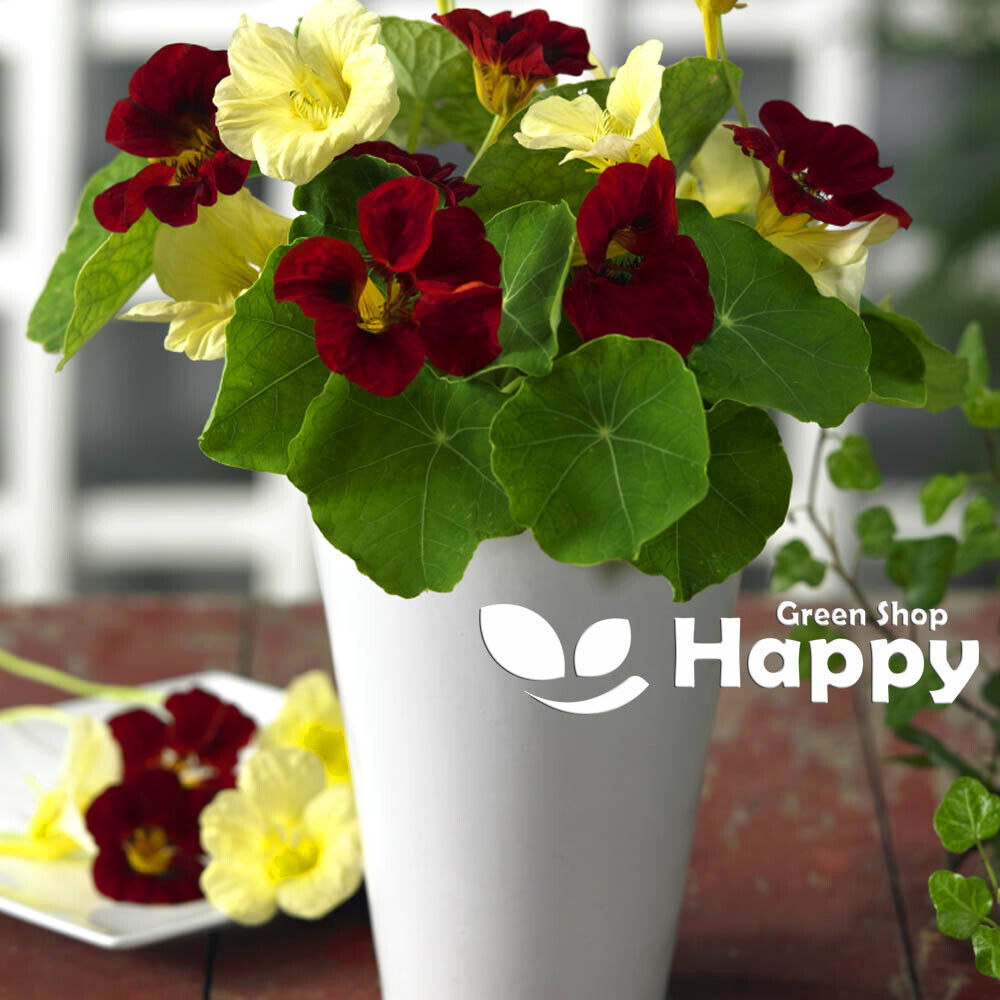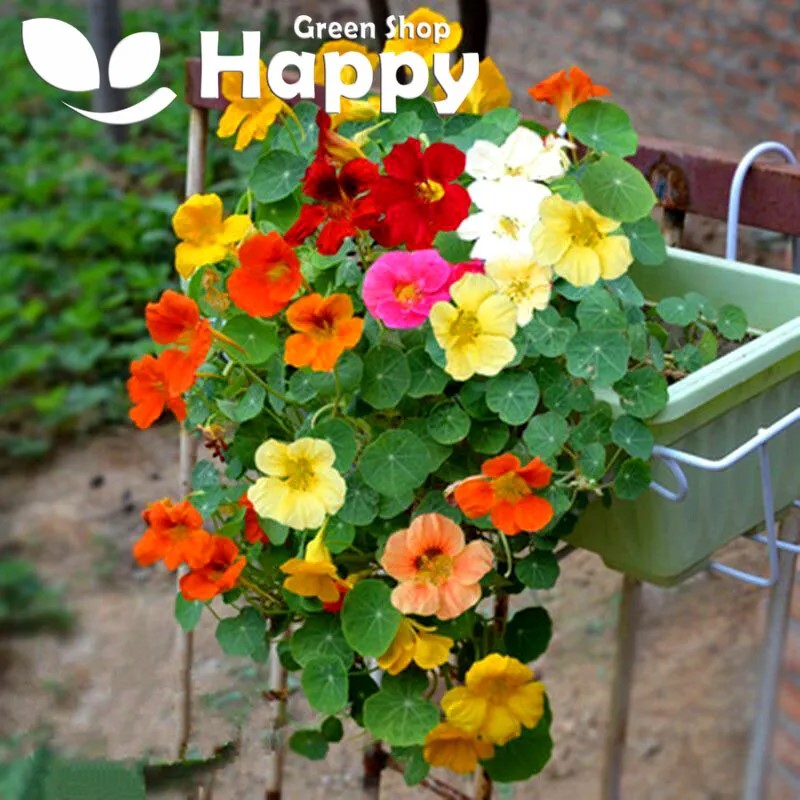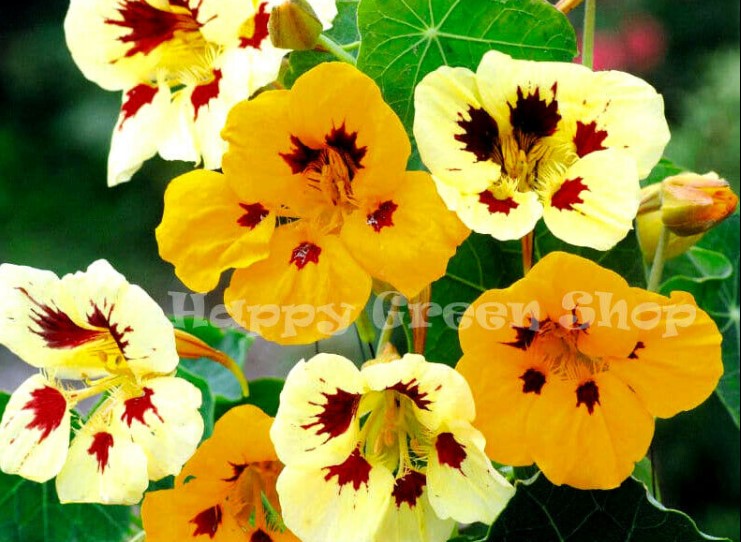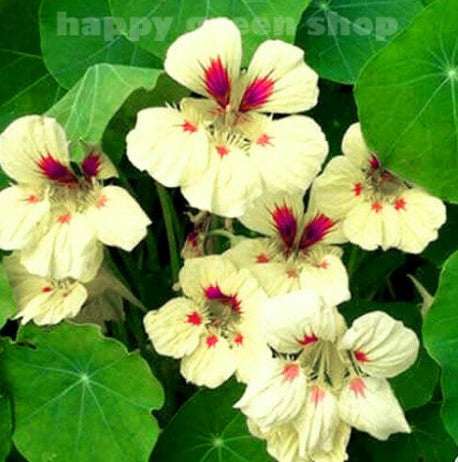Sort by:
225 products
225 products
Onion Tosca – 80 Seeds (Allium cepa)
Description:
Grow flavorful, versatile onions with Onion Tosca (Allium cepa). This high-quality variety produces medium-sized, firm bulbs with a mild, slightly sweet taste. Ideal for salads, cooking, and pickling, Tosca onions are easy to grow from seed and suitable for kitchen gardens, raised beds, and allotments. Resistant to common diseases, they offer reliable harvests throughout the season.
Key Features
-
Medium-sized, firm bulbs with mild, sweet flavor
-
Suitable for salads, cooking, and pickling
-
Disease-resistant and reliable variety
-
Easy to grow from seed
-
Ideal for home and small-scale gardens
Ideal For
-
Kitchen gardens and raised beds
-
Culinary use: raw, cooked, or pickled
-
Allotments and small vegetable plots
-
Home gardeners seeking reliable onions
Sowing & Growing
-
Sow Indoors: February–March
-
Transplant Outdoors: April–May, after frost
-
Germination: 10–14 days at 15–20°C
-
Spacing: 10–15 cm apart in rows 25–30 cm apart
-
Height: 30–40 cm
-
Light: Full sun
-
Soil: Fertile, well-drained, rich in organic matter
Care Tips
-
Water regularly but avoid waterlogging
-
Thin seedlings to prevent overcrowding
-
Fertilize lightly during growth
-
Harvest when bulbs are firm and tops begin to yellow
Onion 'Spanish Sun' Seeds (Allium cepa)
Bring sunshine to your garden with Onion 'Spanish Sun', a reliable, early-maturing variety that produces large, globe-shaped golden bulbs. Known for its mild, sweet flavor and crisp texture, it’s perfect for fresh salads, cooking, or storing. Easy to grow and versatile in the kitchen, this onion is a must-have for every vegetable garden.
How to Grow
-
Sow indoors from January to March or directly outdoors from March to April.
-
Prefers fertile, well-drained soil in full sun.
-
Sow seeds 1 cm deep in rows 30 cm apart.
-
Thin seedlings to 10 cm spacing for full-sized bulbs.
-
Keep soil moist but not waterlogged.
Key Features
-
Early-maturing, large golden bulbs
-
Mild, sweet flavor with crisp texture
-
Suitable for fresh use, cooking, or storing
-
Reliable variety for consistent yields
-
Easy to grow in most garden soils
Ideal For
-
Home gardeners and allotments
-
Fresh salads, soups, and everyday cooking
-
Long-term storage after harvest
-
Gardeners seeking early, high-quality onions
Sowing
-
Best time: Indoors January–March, outdoors March–April
-
Depth: 1 cm
-
Spacing: 10 cm between plants, 30 cm between rows
-
Position: Full sun, well-drained fertile soil
-
Harvest: August to September
Quick Tip
-
Allow bulbs to fully dry in the sun before storing to extend their shelf life.
Onion 'Globo' – Seeds (Allium cepa)
The Onion 'Globo' is a giant exhibition variety, producing exceptionally large, globe-shaped bulbs that can reach up to 800 g each under ideal conditions. Known for its impressive size and sweet, mild flavor, this onion is perfect for both showing and kitchen use. Its thick, golden skins cover a juicy, crisp interior, making it excellent for slicing, salads, and cooking.
Although primarily grown as an exhibition onion, 'Globo' is also valued by home gardeners who want a reliable large onion with excellent flavor. It does not store as long as smaller varieties but is unbeatable for fresh use in summer and autumn.
How to Grow
-
Sow indoors: January – March in seed trays or modules
-
Sow outdoors: March – April, thinly in rows 1 cm deep
-
Transplant/Thin: 30 cm apart when large enough to handle
-
Position: Full sun
-
Soil: Fertile, well-drained, light soil enriched with organic matter
-
Care: Keep well-watered in dry periods; feed regularly for best growth
Key Features
-
Exhibition onion producing bulbs up to 800 g
-
Sweet, mild flavor – ideal for fresh use
-
Golden skin with crisp white flesh
-
Perfect for slicing, salads, and cooking
-
Best eaten fresh – not a long-term storage variety
Harvest
-
Harvesting period: August – September
-
Pull onions when tops yellow and fall over. Dry thoroughly before use.
Short Tip
Start onions early indoors for the biggest bulbs – consistent watering and feeding are key to giant results.
Onion "Augusta" – Seeds (Allium cepa)
The Onion "Augusta" is a reliable, high-quality variety producing uniform, golden-yellow bulbs with firm flesh and excellent storage ability. Known for its good resistance to bolting and disease, Augusta is ideal for both kitchen gardeners and allotment growers seeking dependable harvests. Its mild, well-balanced flavor makes it versatile for everyday cooking.
How to Grow
-
Sow indoors from January to March for transplanting, or direct outdoors from March to April.
-
Sow thinly, 1 cm deep, in rows 25–30 cm apart.
-
Prefers fertile, well-drained soil in full sun.
-
Thin seedlings to 10 cm apart to allow bulbs to swell.
-
Water regularly during dry periods.
Key Features
-
Uniform, golden-yellow bulbs
-
Mild, versatile flavor
-
Good resistance to bolting
-
Excellent storage potential
-
Easy to grow, reliable yields
Ideal For
-
Everyday cooking – soups, salads, stir-fries, roasting
-
Long-term storage after harvest
-
Kitchen gardens and allotments
Sowing & Harvest
-
Sow: January to April
-
Depth: 1 cm
-
Spacing: 10 cm between plants, 25–30 cm between rows
-
Harvest: August to September
Quick Tip
-
Lift onions when the tops begin to yellow and bend over. Dry thoroughly before storing in a cool, airy place.
Oak Leaf Lettuce 'Green Salad Bowl' – Seeds (Lactuca sativa)
A true kitchen garden favorite, Oak Leaf Lettuce 'Green Salad Bowl' is a fast-growing, cut-and-come-again variety with long, deeply notched green leaves that resemble oak foliage. Its mild, tender flavor and crisp texture make it perfect for everyday salads. Easy to grow and slow to bolt, it provides a generous harvest of fresh greens all season long.
How to Grow
. Sow indoors from February to April or directly outdoors from March to July
. Sow thinly, 0.5 cm deep in rows 25–30 cm apart
. Thin seedlings to 20 cm apart, or grow closer for baby leaves
. Prefers full sun and moist, fertile, well-drained soil
. Harvest leaves regularly to encourage continuous cropping
Key Features
. Classic oak leaf lettuce with tender green leaves
. Mild flavor, perfect for salads and sandwiches
. Cut-and-come-again variety for extended harvests
. Slow to bolt, even in warmer conditions
. Easy to grow in beds, borders, or containers
Ideal For
. Fresh everyday salads
. Cut-and-come-again harvesting
. Home gardens, pots, and allotments
. Gardeners seeking reliable, easy lettuce
Sowing & Harvest
. Sow: February – July
. Harvest: May – September
Quick Tip
For the best flavor and texture, pick leaves early in the morning when they’re freshest and most tender.
New Zealand Spinach Seeds (Tetragonia tetragonioides)
Grow a heat-tolerant alternative to traditional spinach with New Zealand Spinach (Tetragonia tetragonioides). This hardy, fast-growing leafy green produces succulent, nutrient-rich leaves ideal for salads, steaming, or sautéing. Perfect for summer gardens, it thrives in warm weather when regular spinach struggles, providing a continuous harvest of fresh greens.
How to Grow
-
Sow seeds directly outdoors after the last frost when soil has warmed.
-
Use well-drained, fertile soil in full sun to partial shade.
-
Sow seeds 1–2 cm deep and thin seedlings to 25–30 cm apart.
-
Keep soil consistently moist for best growth.
-
Harvest young leaves regularly or cut mature leaves, leaving the plant to regrow.
Key Features
-
Heat-tolerant alternative to traditional spinach
-
Fast-growing, nutrient-rich leaves
-
Hardy and easy to grow
-
Ideal for salads, steaming, or sautéing
-
Provides continuous harvest throughout warm seasons
Ideal For
-
Vegetable gardens and raised beds
-
Summer harvesting when regular spinach struggles
-
Fresh salads, cooking, and sautéed greens
-
Continuous harvest of nutrient-rich leaves
Sowing
-
Best time: After last frost, when soil is warm
-
Depth: 1–2 cm
-
Spacing: Thin to 25–30 cm apart
-
Prefers full sun to partial shade and fertile, well-drained soil
Quick Tip
-
Regularly harvest outer leaves to encourage continuous growth throughout the season.
Nasturtium Dwarf ‘Night and Day’ – Seeds (Tropaeolum majus nanum)
Bring vibrant color and edible charm to your garden with Dwarf Nasturtium ‘Night and Day’, a compact variety perfect for beds, borders, and containers. This mix features striking flowers in contrasting shades of deep reds, oranges, yellows, and cream, creating a bold and cheerful display. Both flowers and leaves are edible, adding a peppery kick to salads and garnishes.
Highlights
-
Compact, bushy growth, ideal for small spaces
-
Bright, bi-colored blooms in red, orange, yellow, and cream
-
Edible flowers and leaves
-
Thrives in poor soil and sunny locations
Key Features
-
Botanical Name: Tropaeolum majus nanum
-
Height: 20–30 cm (dwarf variety)
-
Sun: Full sun to partial shade
-
Flowering: Summer to early autumn
Ideal For
-
Garden beds, borders, and containers
-
Edible flower gardens
-
Pollinator-friendly plantings
-
Small-space gardens
Sowing Instructions
-
Sow indoors or directly outdoors after last frost
-
Plant 1–2 cm deep in well-draining soil
-
Space 15–20 cm apart
-
Germination: 7–14 days at 18–20°C
-
Flowers: 8–10 weeks after sowing
Nasturtium Dwarf ‘Whirleybird’ Double – Seeds (Tropaeolum nanum)
Add a burst of color and playful texture to your garden with Dwarf Nasturtium ‘Whirleybird’ Double. This charming variety produces double-layered, vibrant flowers in shades of orange, red, and yellow, creating a striking display. Compact and bushy, it’s ideal for borders, containers, or small garden spaces. Both the flowers and leaves are edible, perfect for salads and garnishes.
Highlights
-
Compact dwarf growth, perfect for small spaces
-
Double blooms in bright, cheerful colors
-
Edible flowers and leaves
-
Thrives in sunny, well-draining locations
Key Features
-
Botanical Name: Tropaeolum nanum
-
Height: 20–30 cm (dwarf variety)
-
Sun: Full sun to partial shade
-
Flowering: Summer to early autumn
Ideal For
-
Small garden beds, containers, and borders
-
Edible flower gardens
-
Pollinator-friendly gardens
-
Decorative accents in compact spaces
Sowing Instructions
-
Sow indoors or directly outdoors after the last frost
-
Plant 1–2 cm deep in well-draining soil
-
Space 15–20 cm apart
-
Germination: 7–14 days at 18–20°C
-
Flowers: 8–10 weeks after sowing
Nasturtium ‘Lady Bird’ Mix – Seeds (Tropaeolum majus nanum)
The Nasturtium ‘Lady Bird’ Mix is a charming dwarf blend with bright golden-yellow blooms beautifully flecked and spotted with deep red. Compact and free-flowering, this variety is ideal for borders, edging, and containers, while also being edible—both flowers and leaves add color and flavor to summer salads.
Why Grow ‘Lady Bird’ Mix?
-
Unique yellow blooms with striking red markings
-
Compact, bushy habit – perfect for small spaces
-
Long-lasting summer flowers
-
Edible flowers and leaves with a peppery taste
Key Features
-
Type: Half-hardy annual
-
Height: 25–30 cm
-
Flowering: June–October
-
Position: Full sun, poor to average soil
-
Uses: Borders, pots, window boxes, edible gardens
Ideal For
-
Bright edging in garden beds
-
Patio pots and window boxes
-
Edible landscapes and salad garnishes
Sowing & Growing
-
Sow indoors: March–April in pots or trays
-
Sow outdoors: April–June directly in soil
-
Germination: 10–14 days at 15–20°C
-
Space plants 20–25 cm apart
-
Prefers poor soil for best flowering
Showing 117/225



